Representing Architecture: How art influenced architectureThe Editorial Team December 01, 2023 Artistic representation played a crucial role in shaping architectural styles and thinking in colonial India. European artists and architects were deeply influenced by the rich cultural heritage and artistic traditions of India, which, in turn, influenced their architectural designs. Artistic representations served as a bridge between cultures, leading to the incorporation of Indian motifs, styles, and decorative elements in colonial architecture. Here are a few ways in which artistic representation influenced architectural styles in colonial India, along with some examples. |

William Simpson
Jama Masjid, Delhi
Collection: DAG
|
|
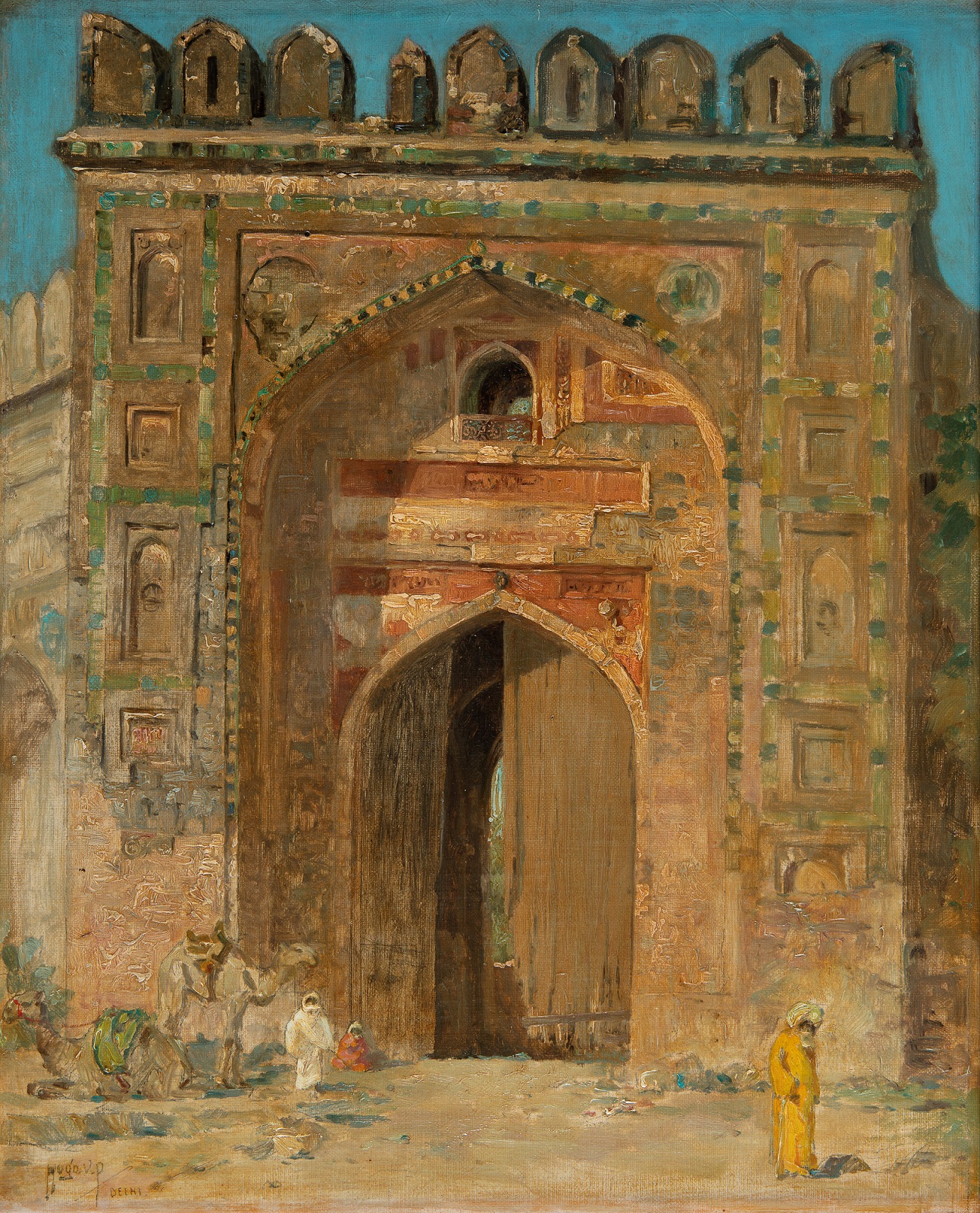
H. V. Pedersen
Gate of the Arab Sarai in Delhi
Oil on canvas, 47.5 x 38.1 cm.
Collection: DAG
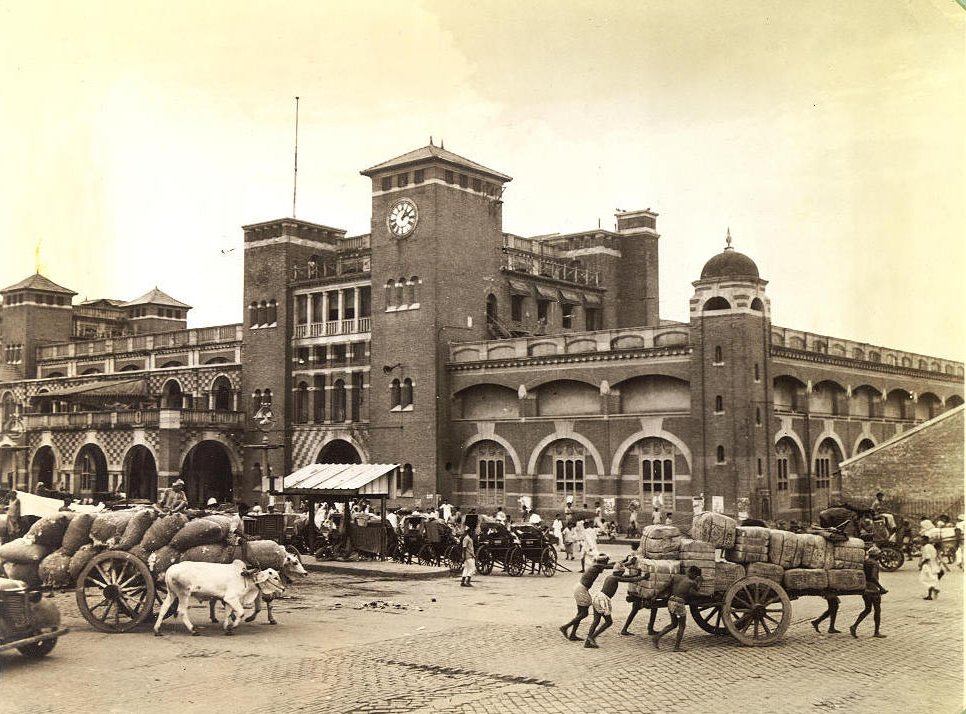
Howrah Station, Kolkata
Image courtesy: Wikimedia Commons
Influence on Decorative MotifsArtistic representations, such as paintings and illustrations, showcased intricate Indian motifs, including floral patterns, ornate carvings, and traditional designs. European architects incorporated these decorative elements into their buildings, enhancing the visual appeal of colonial architecture. The Howrah Railway Station in Kolkata, for instance, features decorative motifs inspired by Indian artistic traditions. Elaborate carvings and intricate designs adorn the building, reflecting the influence of Indian decorative arts on colonial architecture. |
|
|
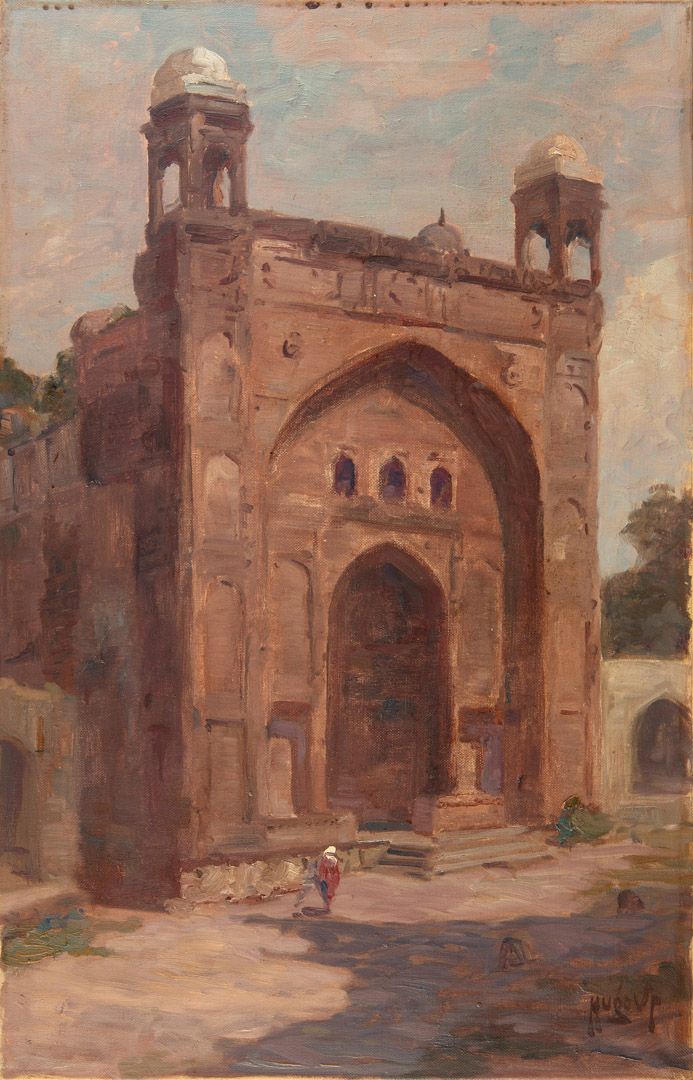
H. V. Pedersen
Delhi
Oil oncanvas, 62.2 X 39.9 cm.
Collection: DAG

Atul Bose
Victoria Memorial, Calcutta
1923, Oil on cardboard, 39.4 x 62.2 cm.
Collection: DAG
Architectural RevivalismArtistic representations of historical Indian architecture, including ancient temples, Mughal forts, and palaces, inspired a revival of traditional architectural styles. European architects studied these representations and integrated elements from different historical periods into their designs, leading to the creation of hybrid architectural styles. The Indo-Saracenic style emerged as a result of this fusion, combining elements of Islamic, Hindu, and Western architecture. This style aimed to create buildings that reflected the cultural diversity of India while incorporating features that were familiar to the colonial rulers. One prominent example of Indo-Saracenic architecture is the Victoria Memorial in Kolkata. Built between 1906 and 1921, this monumental structure was conceived to commemorate Queen Victoria. The architect, Sir William Emerson, incorporated elements from Mughal and Indo-Islamic architecture, such as domes, minarets, and intricate ornamentation, seamlessly blending them with European classical features. The Victoria Memorial is a testimony to how colonial architects revived and reinterpreted Indian architectural styles. |
|
|
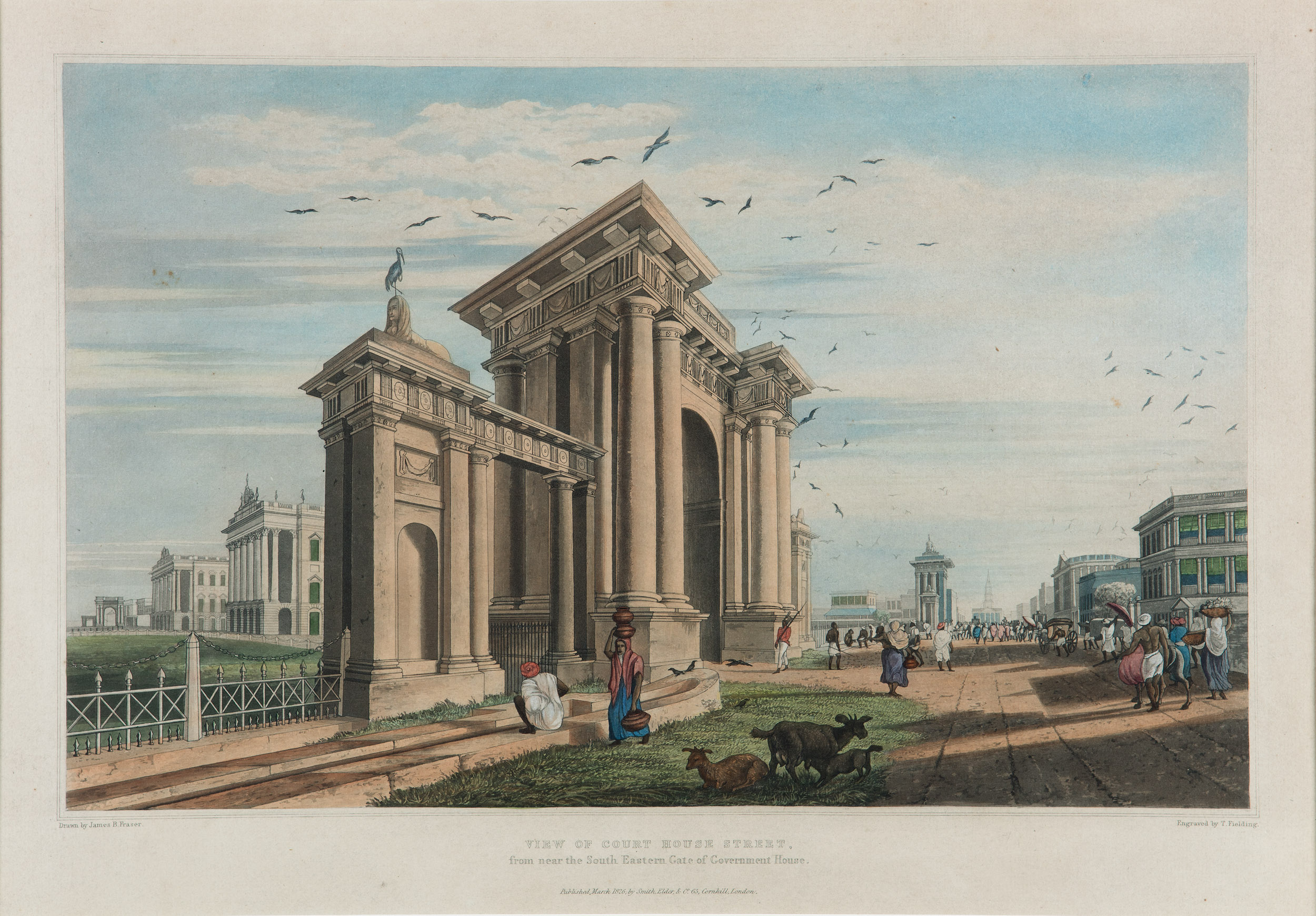
James Fraser
View of Court House Street from Near the South Eastern Gate of Government House
Handtinted engraving on paper
Collection: DAG
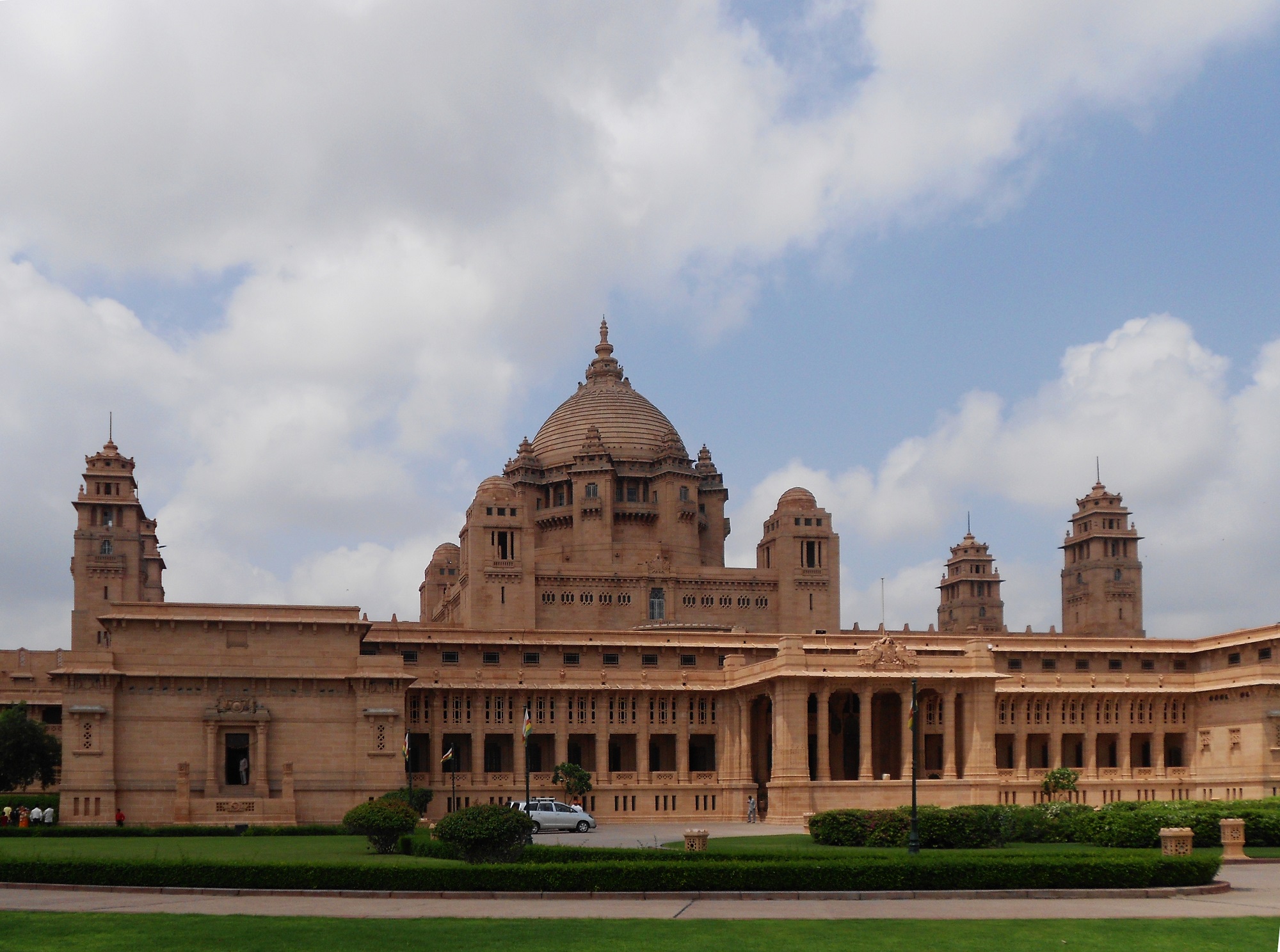
Umaid Bhawan Palace, Jodhpur
Image courtesy: Wikimedia Commons
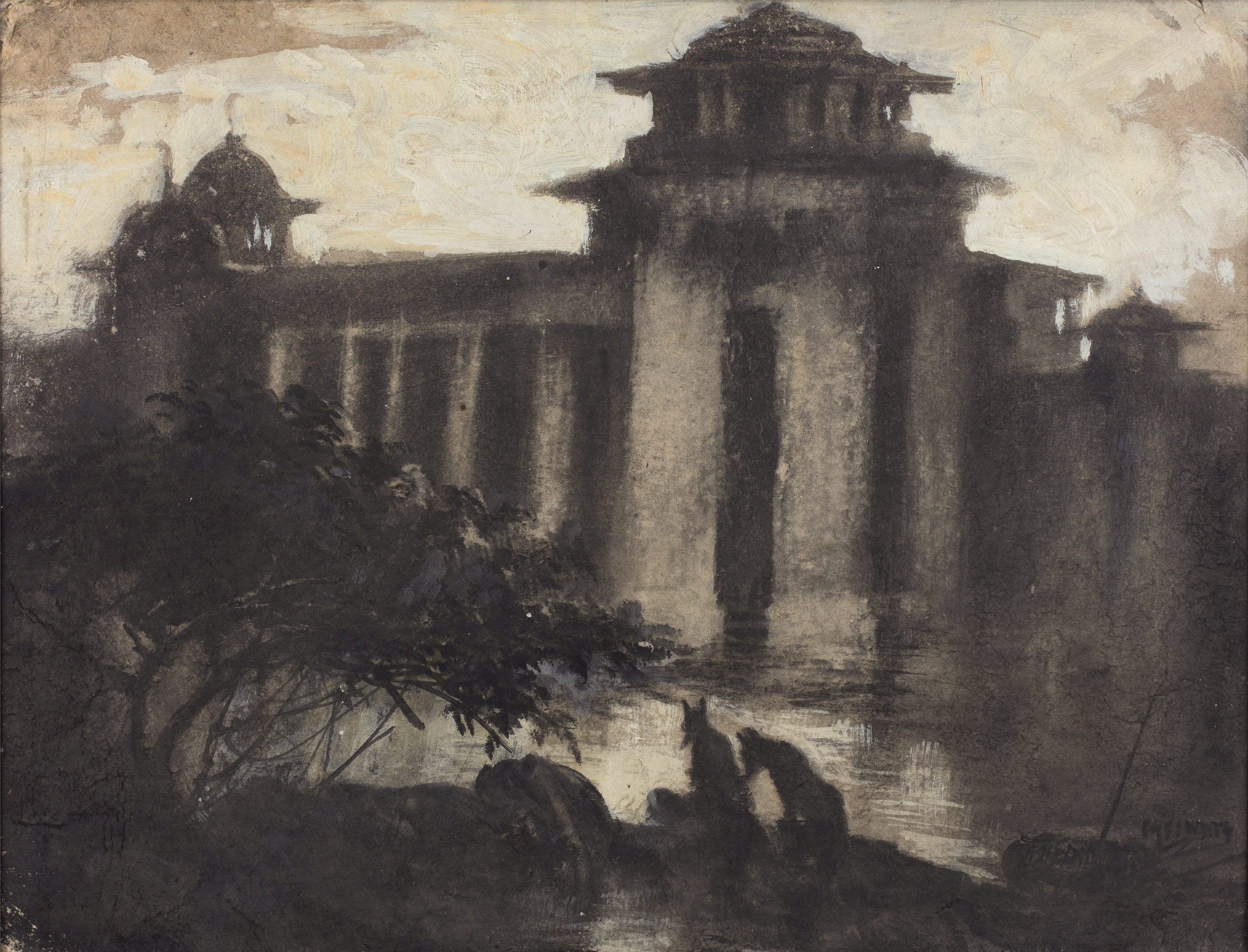
D. P. Roychowdhury
Untitled
Gouache and ink on paper
Collection: DAG
Synthesis of CulturesArtistic representations served as a catalyst for cultural synthesis, where European architects and Indian craftsmen collaborated to create buildings that combined Western architectural principles with Indian artistic traditions. This collaboration resulted in unique architectural forms that reflected the cultural exchange between the East and the West. The Umaid Bhawan Palace in Jodhpur, Rajasthan, designed by Henry Vaughan Lanchester and completed in 1943, is a splendid example of cultural synthesis. The palace combines Western Art Deco influences with traditional Indian architectural elements and intricate craftsmanship, creating a majestic architectural masterpiece. |
|
Narendra Kesari Roy High Court from the top of the Museum, Calcutta, 1933 Woodcut on newsprint paper laid on paper, 17.0 x 21.6 cm. Collection: DAG |
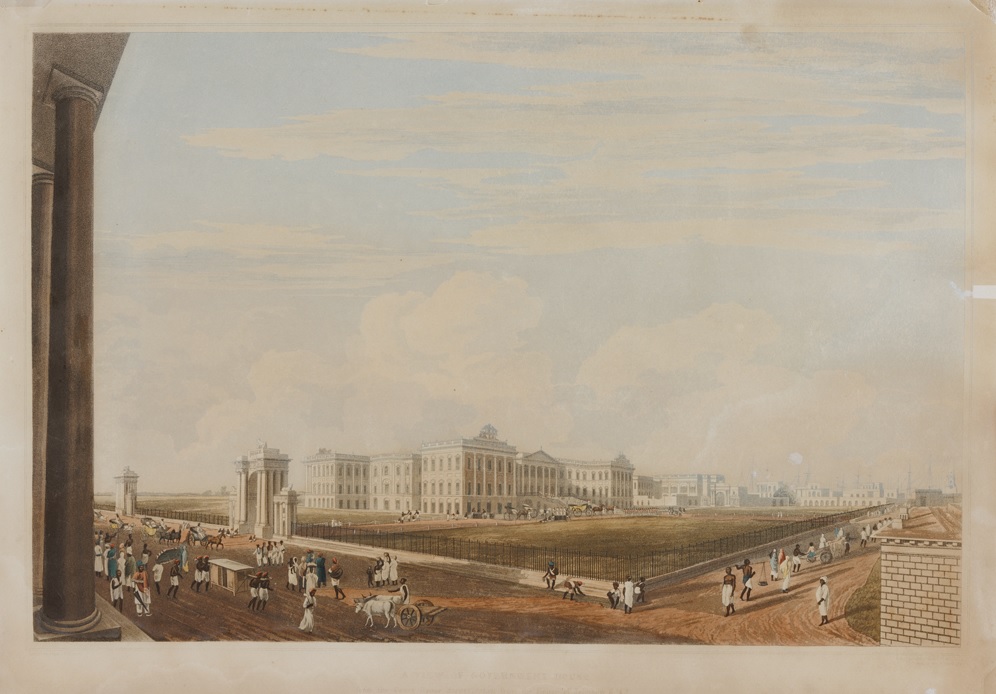
James Fraser
A View of Government House, from the Court house street, taken from the House of Johnson and Co.
1829, Engraving and aquatint, tinted with watercolour on paper
Collection: DAG
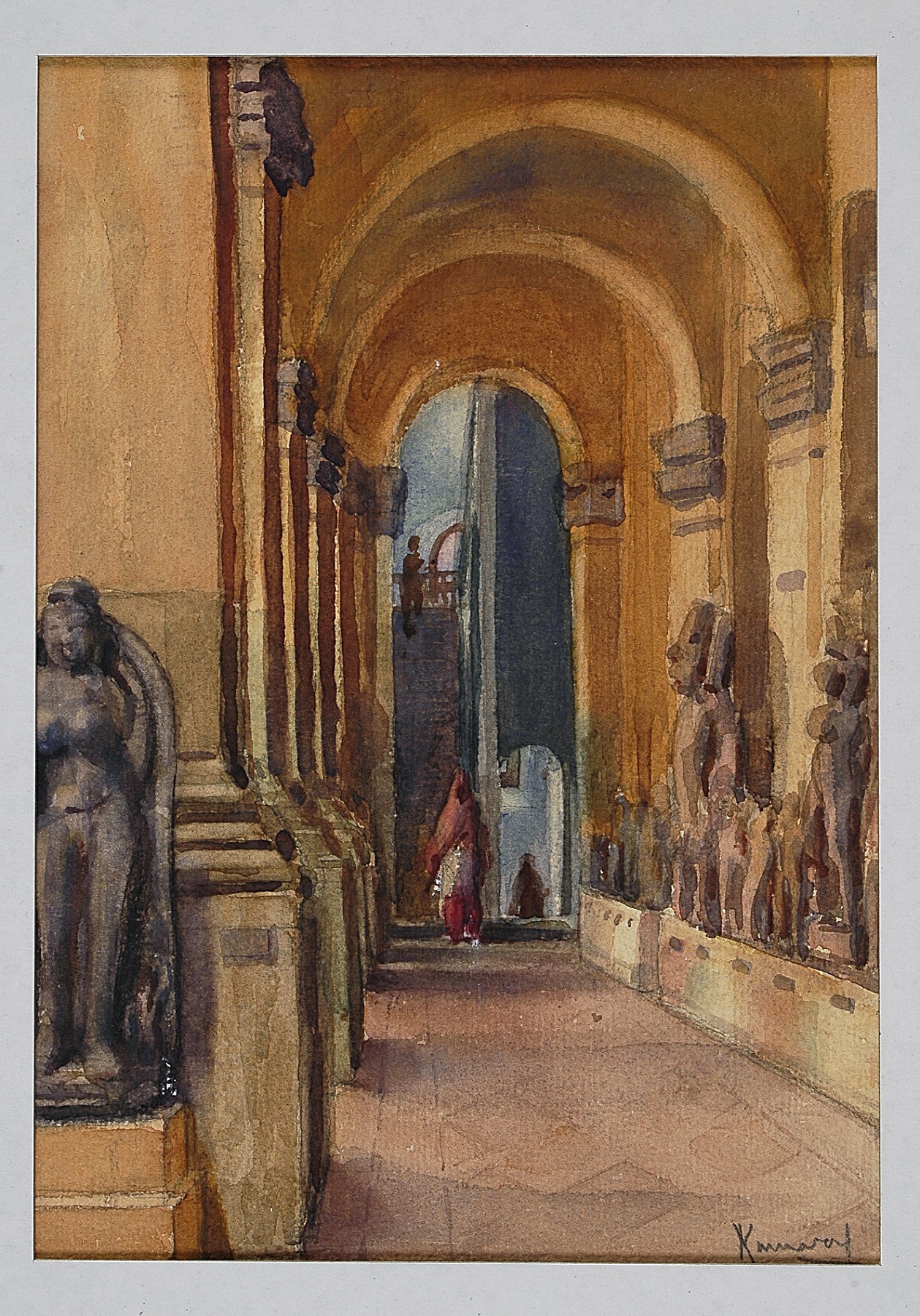
Kanwal Krishna
Calcutta Museum
1935, Watercolour on paper, 24.1 x 17.0 cm.
Collection: DAG
Public Buildings and InstitutionsArtistic representations also influenced the construction of public buildings, educational institutions, and administrative offices in colonial India. These structures often featured architectural details and decorative elements inspired by Indian art, reflecting the colonial administration's attempt to establish a visual connection with the local culture. The Indian Museum in Kolkata, designed by Walter Granville and completed in 1878, for instance, incorporates elements of classical European architecture and features decorative motifs inspired by Indian art. The museum's facade showcases intricate carvings and sculptures reminiscent of traditional Indian craftsmanship. |
|
Paintings, drawings, sketches were made by many European and, later Indian, artists that influenced colonial architectural styles by providing inspiration for decorative motifs, encouraging architectural revivalism, fostering cultural synthesis, and shaping the design of public buildings and institutions. These works went beyond the simple utility of the document or the record, since the nature of representation and the artists’ shifting responses to the value of indigenous architectural styles continued to inform the active ways in which engineers and architects were shaping the built environment around them. The fusion of artistic ideas from different cultures resulted, therefore, in the creation of distinctive architectural forms that continue to be admired for their unique aesthetic appeal and historical significance. |
|
|


